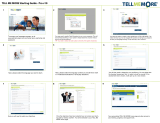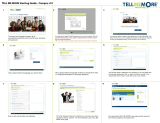
Recovering ........................................................................................................................................................... 18
Installing the Chromebook Recovery Utility ..................................................................................... 19
Creating recovery media ................................................................................................................... 19
Recovering the Chrome operating system ....................................................................................... 19
Setting up your computer after a reset or recovery ........................................................................................... 20
Erase and reformat the recovery media .............................................................................................................. 20
7 More HP resources ....................................................................................................................................... 21
More HP resources ............................................................................................................................................... 21
8 Electrostatic Discharge ................................................................................................................................ 22
9 Accessibility ................................................................................................................................................ 23
Accessibility ......................................................................................................................................................... 23
Finding the technology tools you need ............................................................................................ 23
Our commitment ............................................................................................................................... 23
International Association of Accessibility Professionals (IAAP) ....................................................... 24
Finding the best assistive technology .............................................................................................. 24
Assessing your needs ..................................................................................................... 24
Accessibility for HP PC and tablet products ................................................................... 24
Standards and legislation .................................................................................................................................... 25
Standards .......................................................................................................................................... 25
Mandate 376 – EN 301 549 ............................................................................................ 25
Web Content Accessibility Guidelines (WCAG) ................................................................ 25
Legislation and regulations .............................................................................................................. 26
United States ................................................................................................................... 26
21st Century Communications and Video Accessibility Act (CVAA) ............................... 26
Canada ............................................................................................................................. 26
Europe ............................................................................................................................. 27
United Kingdom .............................................................................................................. 27
Australia .......................................................................................................................... 27
Worldwide ....................................................................................................................... 27
Useful accessibility resources and links .............................................................................................................. 27
Organizations .................................................................................................................................... 28
Educational institutions .................................................................................................................... 28
Other disability resources ................................................................................................................. 28
HP links .............................................................................................................................................. 28
Contacting support .............................................................................................................................................. 28
Index ............................................................................................................................................................. 30
vi





















